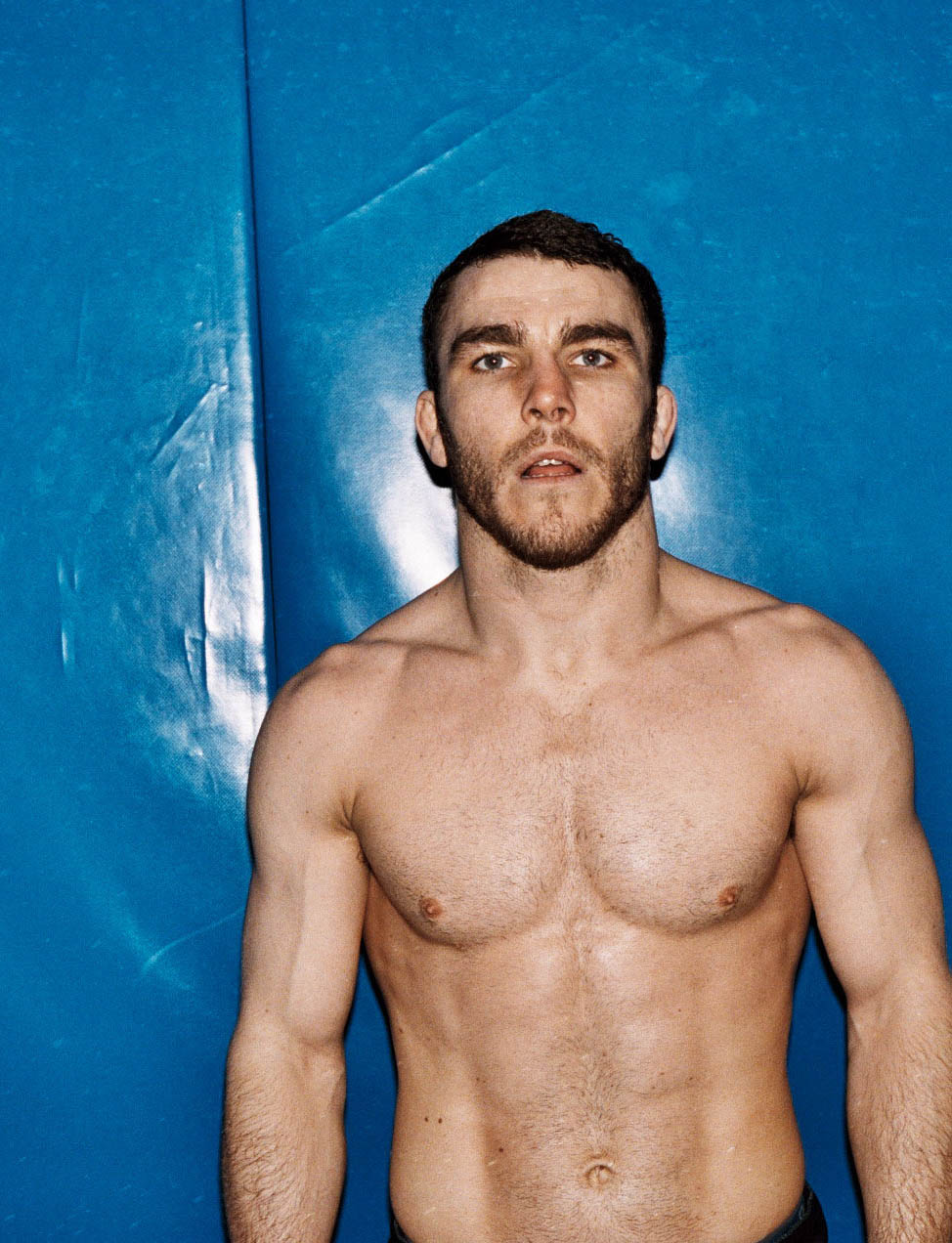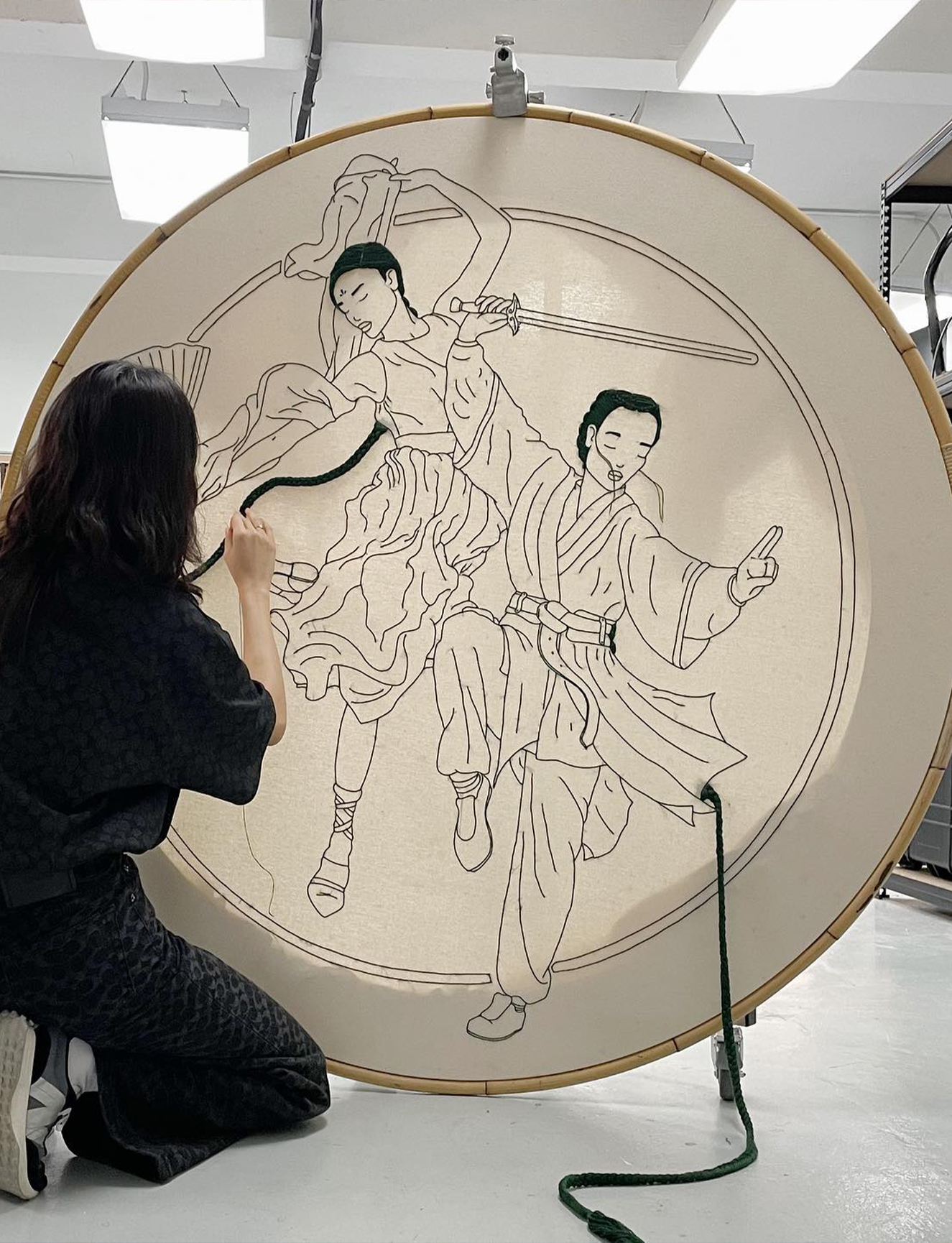On Criteria
Alexa Meffe: Artists To Watch isn’t something we sit down to do only in December. All throughout the year we all keep our own lists of who we’re excited about, or have our eye on. Then we kind of get together at the end to narrow down a collection of people that draws not just on one of our tastes or preferences, but on everyones.
Nick Law: We put this criteria together:
- Covering a range of artistic disciplines and perspectives
- Artists in the early stages of their careers
- (Ideally) no coverage from the biggest publications
- Unique and recognisable styles
- Coherent styles
And this just really helped us to narrow down the list and feed back on other people’s suggestions too.
AM: Exactly. We all have separate lists and we all have different tastes, which is normal. But to have those criteria kind of puts everyone on the same base, and then it makes those conversations much easier.
On Finding New Fields And Perspectives
AM: The list was broader this year, that came about very naturally. From the wider list we developed over the year, we realised that we’d instinctively included loads of things, just because we think they are cool and new and interesting.
NL: So say we have food on it this year, where we didn’t before. We didn’t sit down and say, “We want food artists.” But looking through the wider list of everyone we were interested in (It was a list of maybe 50 artists in total), Meech Boakye, the food artist, was one that everybody was really excited about. It’s the kind of thing you never knew you needed in your life.
Especially during lockdown I think food became a much more important part of life because it’s all you could be doing, like all you can really do it cook you know, cook and eat.
AM: It’s very different from anything else really. You look at a lot of illustration and common things can come up, colours and stuff, but when you go on Meech’s page it’s like, “Oh, this is totally different but I’m so excited to see more!”
On What Makes An Artist ‘Emerging’
AM: I don’t think age is a factor, necessarily. When it comes to setting out to look for new artists, obviously it can be easier to look at students’ work because they’ll all be starting off. But I don’t think that we ever set out to look for youth.
I also think that it’s really important to remember that ‘starting off’ can mean very different things. It doesn’t have to only be that you’ve just started to make art, it can be instead maybe that your art has shifted in some way. Take Claire Millbrath, she’s been running Editorial Mag for years and years, and it’s become an institution, and then more recently she’s been creating paintings. In the last year or so I feel she’s really found her voice and style in painting, for me that’s something new, so that’s ‘to watch’.
I don’t think age is a factor
NL: That’s the really interesting point. The really boring point though, that’s still important, is how many Instagram followers someone has and how many posts they make. Say if someone’s posted 3000 times, that kind of suggests that they’ve been going for quite a long time, so when it comes to looking for people who are a little bit earlier in their journey, things like fewer followers and posts come into play. And connected to that, something we discussed was trying to support people who maybe needed the support a little bit more. You know, if someone has 20,000 followers that’s obviously great, but they maybe don’t then need the Artists to Watch spot as much as someone who’s got 2000 followers.
On Finding New Artists
AM: I think it’s become a bit of a habit to use Instagram as the main resource when it comes to scouting new talent. As a medium it’s so visual, accessible and easy to use, and really quickly you can map out different scenes of creatives through who’s tagged in what. And in the last few years especially, when it’s been impossible to attend exhibitions and graduate shows, it’s been really important to have this platform.
Plus, as Nick said, we’re used to certain criteria; followers, number of posts. These are things that we can understand very quickly. So we know, for example, what the amount of followers someone has means in terms of the weight they carry as an artist. If I were to look on another platform and see the amount of followers there, I don’t necessarily know what that means.
But social media isn’t the be all and end all. If I were to go to a graduate show and someone had really brilliant work but no Instagram presence, it would make me really excited – no one knows this!
NL: I think also that everybody in the team uses Instagram in a different way. I know that some people use it pretty actively to find new artists, but for me personally, I generally use it more to kind of organise artists, and then keep tabs on what they are doing.
Social media isn’t the be all and end all
I guess it’s true that you don’t really tend to find many artists who don’t have an Instagram presence at all. But at the same time, I’d like to believe that if they didn’t, we’d still find a way of keeping tabs on them, whether that’s through other publications that we follow and use to discover new work, or just your classic bookmarks or some equivalent.
AM: I’d say we’re all very interested and invested in art in general. Enough to, as Nick said, look at other publications and go to exhibitions, just because we like it. I mean most of the time when we discover someone new, we weren’t really actively looking, their work just kind of came up and caught our eye.
On Knowing It’s About To Be An Artist’s Year
NL: The advantage of having followed someone for a while is you can see them sort of finding their feet. And that to me is a really, really exciting thing. A lot of artists you can see quite early on they’ve obviously got a subject matter they are passionate about, and they’re on to something, but for certain artists you can kind of see, like it’s incredibly satisfying when that all falls into place, and really clicks.
You can see them finding their feet
AM: Exactly. One of the criteria we used to put together the list was ‘coherent style’, and I think that’s what we meant by that. It’s seeing that a person had been experimenting, and then had found that thing that just, they’re just amazing at, and you can see them just diving into it.
Or another way of saying it is that their work is now really recognisably theirs. People who have gotten to the point where you just instantly know who created it.
NL: And that ties back to a point on Instagram too. I follow like 3,500 people, or more even, on Instagram, so there is a lot of work, and the feed is quite busy, but there’s certain people, their work pops up, and you can still get that jolt of excitement. And even if you haven’t seen the name, you immediately know it’s Chinaza Agbor, or Firpal, or Hayley Dawn Muir. Just instantly it’s so recognisable; it’s such a unique, powerful style.
On Translating An Art Practice Into A Social Media Presence
AM: To me it’s really about being genuine. That an artist is just being themselves to the core, and is putting out work that they’re passionate about; you can feel that right away.
Unfortunately because of technology and the way algorithms work, it seems like a lot of artists feel the pressure to either post often or do reels and stuff like that. I find that sucks, because it might mean you post things because you feel that you have to.
Different strategies work well for different people
NL: A lot can be down to the artists and their personality as well; different strategies work well for different people. There are some artists who are, I don’t know if it’s more extrovert necessarily, but they are happy to post their work in progress, they can post shots if they’re doing an exhibition, they might just post pictures of themselves and what they’re up to. There’s a lot of free-flowing content. Whereas a lot of artists I guess are more introverted, or maybe more kind of measured with what they post. It might just be once a week, or once a month, or even once every couple of months. And that can be really compelling too, almost the Jai Paul effect.
AM: Something we talk a lot about is, when I see a profile and I can see their, I don’t know if personality is the right word, but just understand more about the person. Like when you understand the person and why they do the work that they do, there’s a certain level of extra appreciation that you can have.
On Authenticity
NL: In terms of how you kind of ‘market’ yourself, or put your work out, definitely that sense of authenticity is really important, and it’s the same in the work as well. You can often see when an artist might be kind of using a style, or going with certain messages because they’re in vogue at the moment.
If there’s passion behind the work, you feel it
Whereas I think definitely, I mean I’m speaking for Alexa here, but we’re particularly attracted to artists and work which really has that authenticity. They’re not just doing it because that style is particularly popular, or because that message is particularly popular. You can kind of see that it’s, the message might be super important to them, or the style is just very individually theirs. There’s nothing wrong with being trendy, but it can be hard to have longevity if you’re making work solely because it’s on-trend, or other people are doing it.
AL: I mean if there’s passion behind the work, you feel it, don’t you.
For more from Artists To Watch, head to our Instagram to meet each of our artists, and for a look back at past years, check out Artists To Watch 2020 & 2021: Where Are They Now?
Shop the Artists To Watch collection here.






